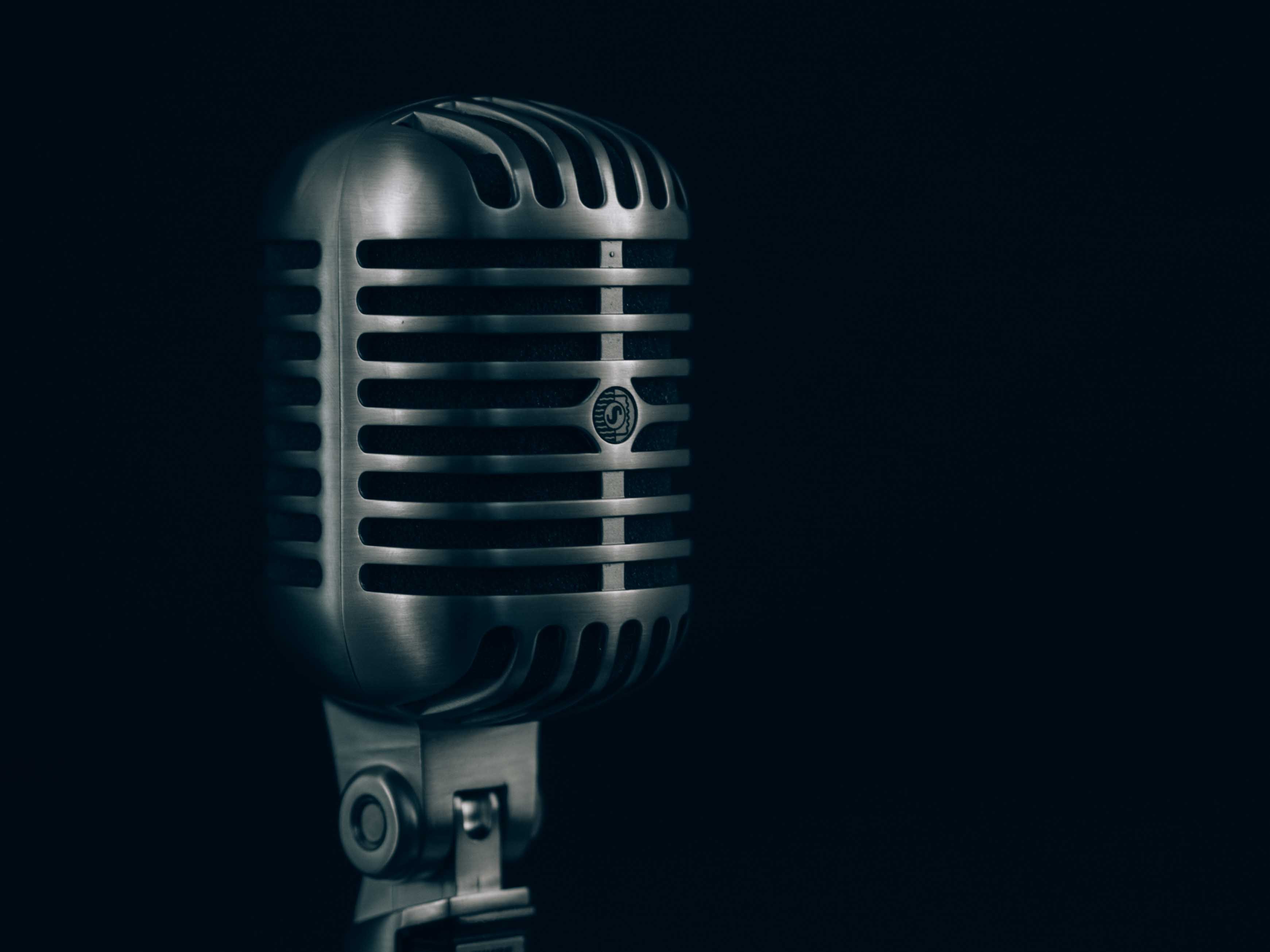Do you realize how critical audio is? An external microphone is the first piece of equipment we recommend you buy if you plan on making media with your phone. We tested the “plug & play” recording-quality of 25 smartphone compatible microphones, looking at how good the audio produced would be when used by a novice who just plugs the microphone in and hits record*.
Getting 14 mission-media practitioners to listen repeatedly to the sound of silence (checking for a microphone’s self-noise/background hiss) is no small thing. They listened as I recited Romans 8:31-34 upon 16 lapel microphones (clipped to my shirt) and nine “shotgun” microphones (attached to a mobile phone or boom pole and pointed at me).
After multiple rounds of blind testing (reviewers didn’t know which microphones they were rating – see videos below), here are the microphones ranked from best to worst in perceived audio recording quality. The ones we would recommend are in bold:
Lapel Microphones:
Polsen MO-PL1 ($50. Best mid/upper range budget lapel mic)
PowerBear (My overall highest recommendation for its performance, price, and accessories (e.g., long extension cord and TRRS to TRS adapter). It was $8 on Amazon, but it is no longer available there. You may be able to purchase it for $11 on eBay).
Rode Wireless Go ($200. Its excellent sound quality and ability to record good audio without a wire connection to a phone/camera is great, but the price is high. It also requires users to buy a $15 adapter, if they want to plug into their smartphone’s TRRS headphone jack. Most customers will also need to purchase a lavalier mic, assuming they won’t want the equipment displayed in their video).
Power DeWise ($22. Best available low/mid-range budget lapel mic).
MUXMA ($8. Unavailable currently, but you may be able to purchase it on eBay).
MXL MM160 ($30).
Movo PM-10 ($15).
Aspen Mics HQ-SPK STEREO LAVALIER ($50).
Deity V.Lav ($50. Tied with FMUSER).
FMUSER ($9. Tied with Deity V.Lav, the best available ultra low-budget microphone).
Purple Panda Lavalier Lapel Microphone Kit ($30).
PoP voice Upgraded Lavalier Lapel Microphone ($10, box labeled as “610”).
Rode SmartLav+ ($60).
PANASONIC ErgoFit Earbud Headphones with Microphone and Call Controller ($12).
Boya BY-M1 ($20).
Polsen MO-IDL ($20).
Shotgun Microphones (from best to worst):
Boya BY-MM1 ($30.Highly recommended; if you can find the Movo VXR10 at the same price, they seem to be the same device, but they are branded differently).
Movo VXR10 ($40. See Boya BY-MM1 above).
Rode VideoMicro ($59. The Rode VideoMic Me should have the same audio quality).
Boya BY-A7H ($22).
Saramonic Mini Smart Mic ($25, the last mic with a positive score, though very low).
AmpRidge MightMic S ($50).
Boya BY-DM100 ($60. Uses a USB-C connection).
Saramonic SmartMic+ UC ($75. Uses a USB-C connection).
iRig Mic Cast ($30. While the lowest scoring of the group, one audio professional noted that it has performed well for him as a stick microphone (as in reporters sticking microphones in people’s faces) or as an “ambient audio” microphone).
If you would like to listen yourself, here are the recordings. Listen to them with headphones and don’t look to see which mic is which until after you rank them yourself:
Lavalier Mics Test 1
Lavalier Microphones Comparison Test from Keith Williams on Vimeo.
A – Purple Panda Lavalier Lapel Microphone Kit
B – Movo PM-10
C – Aspen Mics HQ-SPK STEREO LAVALIER
D – Rode SmartLav+
E – PoP voice Upgraded Lavalier Lapel Microphone
F – Google Pixel 2 Smartphone Internal Microphone
G – MXL MM160
H – Rode Wireless Go
I – PANASONIC ErgoFit Earbud Headphones with Microphone and Call Controller
Lavalier Mics Test 2
Lavalier Microphones Comparison Test 2 from Keith Williams on Vimeo.
J – Deity V.Lav
K – Polsen MO-IDL
L – MUXMA
M – FMUSER
N – Rode SmartLav+ (Retest to rule out operator-error).
O – Polsen MO-PL1
P – PowerBear
Q – Boya BY-M1
R – Power DeWise
Shotgun Mics Test
Shotgun Microphones Comparison Test from Keith Williams on Vimeo.
Movo vs Boya Shotgun Mic Comparison from Keith Williams on Vimeo.
C – Rode VideoMicro
D – Google Pixel 2 Smartphone Internal Microphone
E – Movo VXR10
F – iRig Mic Cast
G – Boya BY-A7H
I – Boya BY-DM100
* All audio was recorded using a Google Pixel 2 and the FiLMiC Pro app. Since the Pixel 2 only has a USB-C port, an adapter was used to enable the use of 3.5mm audio plugs (this adapter also enables charging the phone while recording).

Hey Keith,
My name is Joel and I work for the Jesus Film Project. We actually have media in the Afar language as well that is highly effective. Would love to discuss more with you on this.
Joel, send an email to Clyde@visualstory.org